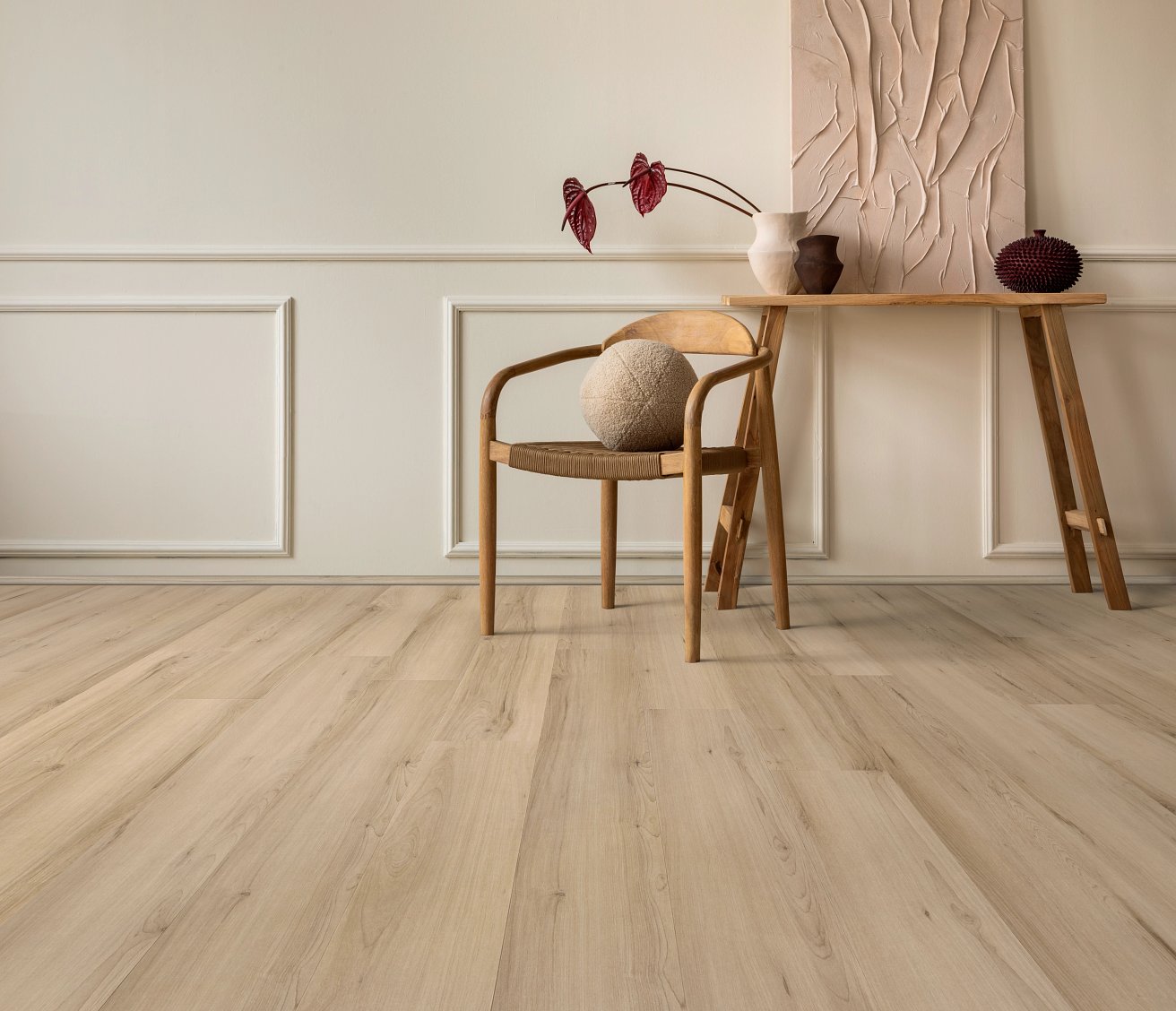
A Designer’s Guide to Flooring
Materials That Matter How do I know I am picking the right material for my project? How do I determine how my lifestyle effects my decision? Let’s talk about what’s under your feet. Because whether you’re sipping coffee in your kitchen, chasing toddlers across the living room, or tiptoeing into your spa-like bathroom, your flooring […]
Materials That Matter
How do I know I am picking the right material for my project? How do I
determine how my lifestyle effects my decision?
Let’s talk about what’s under your feet.
Because whether you’re sipping coffee in your kitchen, chasing toddlers across the living room, or tiptoeing into your spa-like bathroom, your flooring is always there—doing the most. It grounds the space. It anchors your design and one of the most important decisions of your renovation. It NEEDS to hold up to real life. If you’re building, renovating, or refreshing your home, flooring is one of the biggest investments you’ll make. So let’s take the guesswork out of it. Below, we’re breaking down four of the most popular materials—solid hardwood, engineered hardwood, luxury vinyl plank (LVP), and tile—and how each play with different lifestyles, families, and furry companions.
Solid Hardwood
For the forever-home enthusiast who values tradition and long-term beauty. Hardwood is timeless for a reason. Made from one solid piece of real wood, these floors offer richness, natural grain, and that warm, elevated feeling that instantly makes a space feel homey—but chic. If you’re looking for a long-term investment and love the idea of aging gracefully (your floors, not you), hardwood delivers.
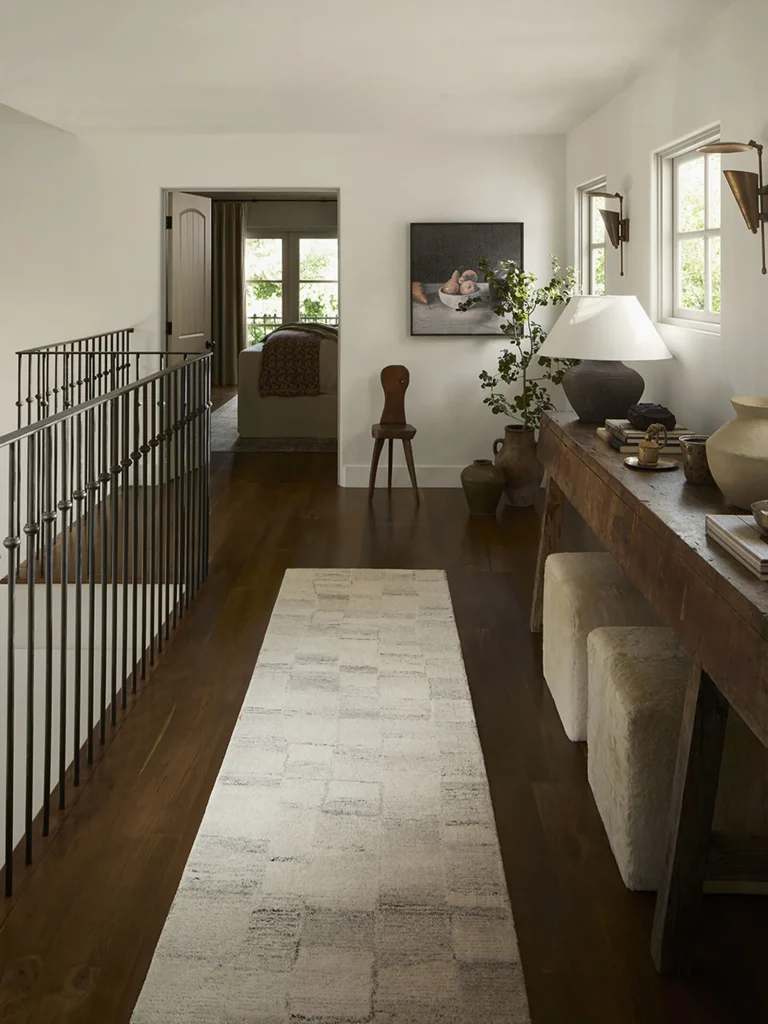
Gorgeous rich walnut hardwood flooring grounds he overall design direction of space
Best Fit For:
Homes without moisture concerns (i.e. no kids running in with wet swimsuits or giant drooling dogs)
Empty nesters or adults-only households who want classic appeal Those who love the patina that develops over time (read: a few scratches are character, not chaos)
Lifestyle watch-outs:
Not ideal for high-moisture areas or homes with big dogs and zoomy kids—it can scratch and warp
Can require more TLC (think: refinishing every 10–20 years)
The cost of solid hardwood can vary widely, depending on several key factors. Plank width and length play a major role—wider, longer boards tend to create a more seamless, high-end look, but they come at a premium. Wood species also impacts price; for example, oak and maple are more affordable, while walnut or exotic woods like Brazilian cherry can significantly increase the cost. Additionally, thicker planks offer more durability and refinishing potential, which adds to the overall investment. Don’t forget to factor in installation, which is typically more labor-intensive with solid hardwood due to nail-down methods and subfloor prep. On average, expect to budget between $8–$15 per square foot installed, with luxury or custom options exceeding that range.
Engineered Hardwood
For the modern family who wants the wood look—with a little more grace under pressure. Engineered hardwood looks and feels like the real deal—because it is— but it’s built with a multi-layered core that gives it more stability and resistance to moisture. Translation: it can handle a little more chaos without sacrificing
style.
Best fit for:
Households with kids, pets, or both, who still want that elevated wood aesthetic
Homeowners who love wide-plank or light-toned flooring looks Spaces where climate changes (hello, seasonal humidity) might be an issue
Lifestyle watch-out
Some lower-quality engineered floors can’t be refinished, so selecting the right product is key
Still wood, so it can scratch—though many come with strong protective coatings
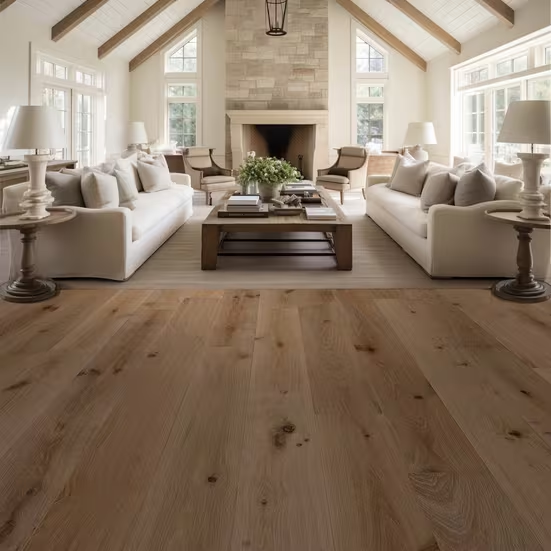
Gorgeous Knotty Engineered Hardwood
Engineered hardwood is often a more cost-effective alternative to solid hardwood, offering the same beautiful top layer of real wood but with a structurally stable core beneath. Pricing depends on similar factors: plank width and length, wood species, and veneer thickness. Wider and longer planks typically cost more, as do premium species like white oak, walnut, or hickory. While entry-level options can start as low as $5–$8 per square foot installed, high-quality engineered hardwood with a thick veneer and wide planks can rival or even exceed the cost of traditional hardwood, especially when opting for custom finishes or patterns. Overall, engineered hardwood delivers a high-end look with added flexibility— making it a smart, stylish investment for many homeowners.
Luxury Vinyl Plank (LVP)
For the“real life happens here” households—think pets, puddles, and pizza nights. LVP is a flooring superstar—and for good reason. It mimics the look of hardwood or stone, but it’s completely waterproof, super durable, and budget-friendly. It’s the no-drama option for busy homes that want great style and zero stress.
Best fit for:
Young families with small kids, pets, or high-traffic chaos
Homeowners who want low maintenance and high performance
Those who don’t want to worry about scratches, spills, or messes
Lifestyle perks:
Scratch- and water-resistant—so it can handle muddy paws, sippy cup spills, and furniture dragging like a pro
Soft underfoot and warmer than tile—perfect for crawling babies or chill mornings
What to consider:
Doesn’t offer the same prestige as real wood, but design options have come a long way
You will find a more manufactured look with the consistency of knots and wood grain vs a real hardwood or engineered hardwood
Can’t be refinished, but it lasts so long that it often doesn’t matter
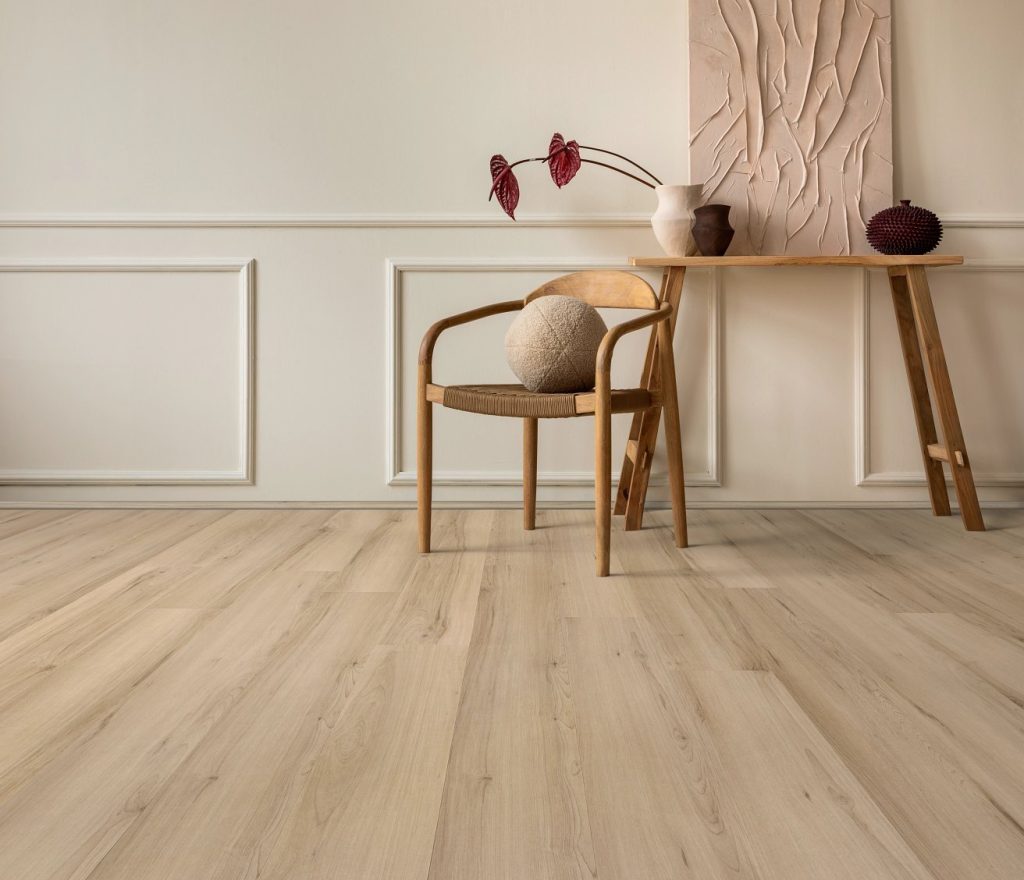
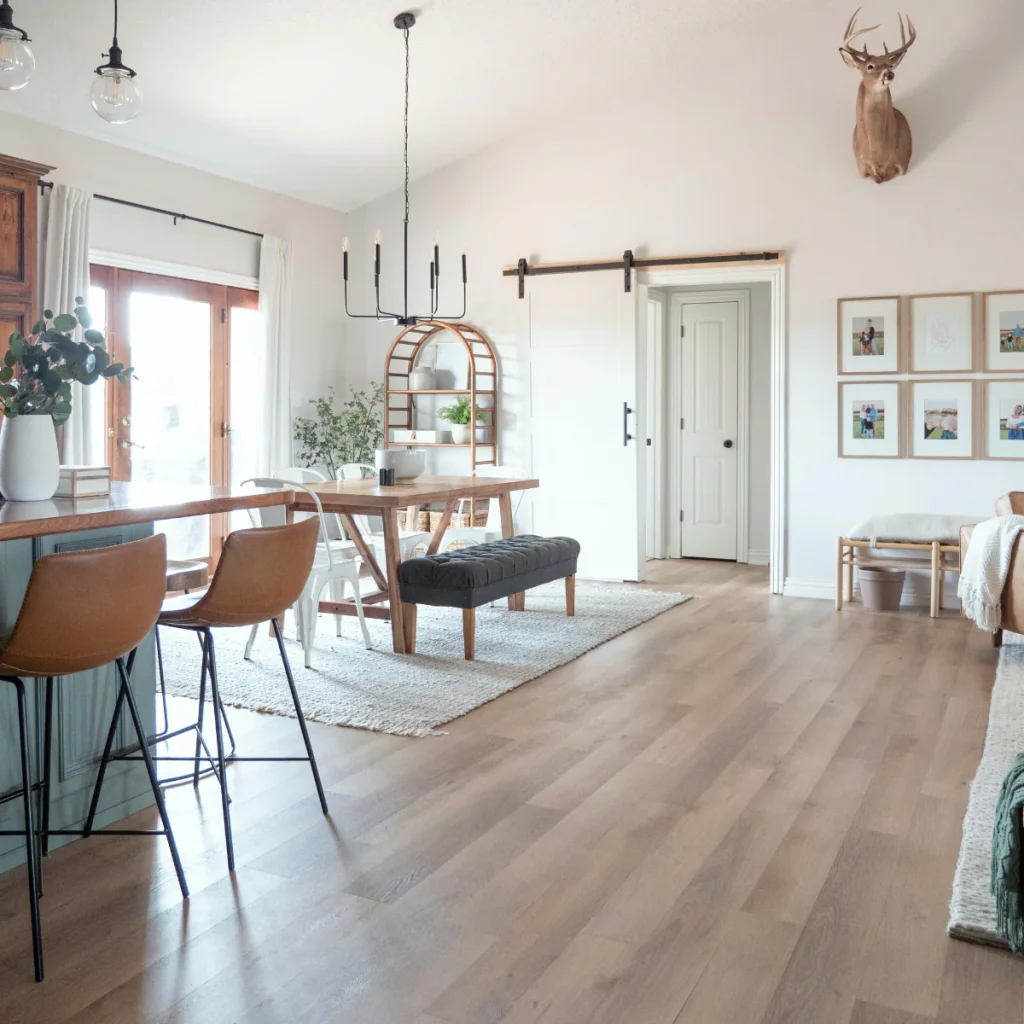
Luxury Vinyl Plank (LVP) offers one of the most budget-friendly flooring solutions without sacrificing style. Compared to engineered and solid hardwood, LVP is significantly more affordable, typically ranging from $3–$7 per square foot installed, though premium or commercial-grade options with enhanced durability or ultra-realistic textures can edge slightly higher. While it mimics the look of natural wood species like oak, walnut, or hickory, LVP is made from synthetic materials—so you’re not paying for rare wood or veneer thickness. However, plank size, wear layer thickness, and overall construction quality still affect pricing. Wider, longer planks or more textured, embossed finishes often carry a modest premium. Installation costs are generally lower too, thanks to its lightweight material and click-lock systems that make it faster to lay. For clients who want a hardwood look with waterproof performance and less investment, LVP is an incredibly smart and stylish choice.
Tile
For the bold and the beautiful—or anyone who needs a worry-free waterproof zone. Tile is the darling of durability. From classic porcelain to bold patterned cement, it’s a dream for wet areas and dramatic design moments alike. It’s also nearly indestructible, making it ideal for high-traffic zones and spaces that get, well, messy.
Best fit for:
Households that want maximum durability with minimal maintenance Pet owners (especially big dogs!) who want scratch-proof, mop-and-go ease Design lovers who want to make a statement with bold floors or gorgeous patterns
Homeowners that want the look and feel of wood but want the durability at the forefront
Lifestyle perks:
Doesn’t scratch, stain, or fade easily—great for busy entryways and bathrooms Easily cleaned and cool underfoot (especially in warmer climates)
What to consider:
Harder and colder than other flooring options—may need area rugs or radiant heating
Installation costs can be higher, especially for patterned layouts
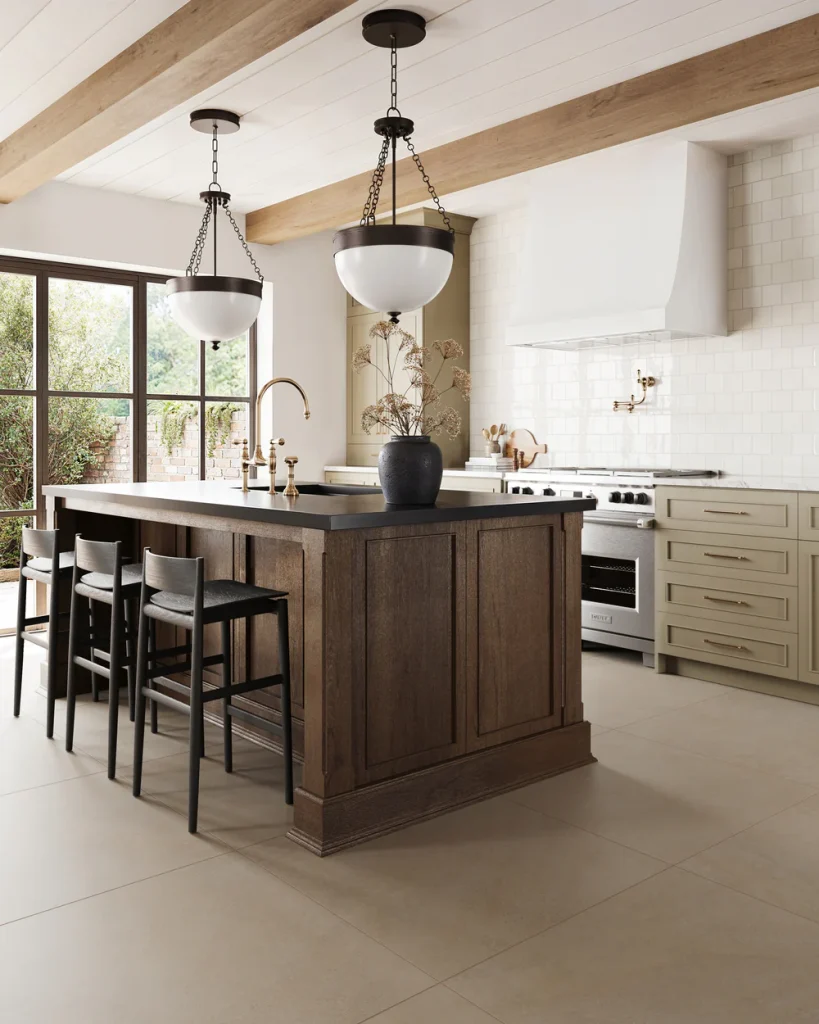
Buttery Soft Stone couple with refined texture
Tile offers unmatched durability and design versatility, but it typically comes at a higher price point, especially when compared to LVP and even some hardwoods. Pricing varies widely based on the type of tile (porcelain, ceramic, natural stone), as well as size, shape, pattern complexity, and finish. Standard ceramic tiles can start as low as $5–$7 per square foot installed, while high-end porcelain, marble, or patterned cement tiles can exceed $15–$30 per square foot or more. Unlike wood flooring, which is priced by species or veneer thickness, tile pricing is influenced by material type and manufacturing process, not wood species. Installation is where tile gets pricey—it’s labor-intensive, especially for large format or intricate patterns, and often requires a specialized installer. While it may cost more upfront than LVP or engineered hardwood, tile’s water resistance and longevity often make it a worthwhile investment for bathrooms, kitchens, and high-traffic areas.
At the end of the day, your flooring does more than fill a space—it sets the tone, supports your lifestyle, and brings your design vision to life from the ground up. Whether you’re drawn to the timeless charm of solid hardwood, the flexibility of engineered wood, the durability of LVP, or the endless creativity of tile, the right
choice comes down to how you live and what you love.
Every home—and every homeowner—is different. That’s why we take the time to guide our clients through not just what’s beautiful, but what’s smart, practical, and long-lasting for their unique needs.
